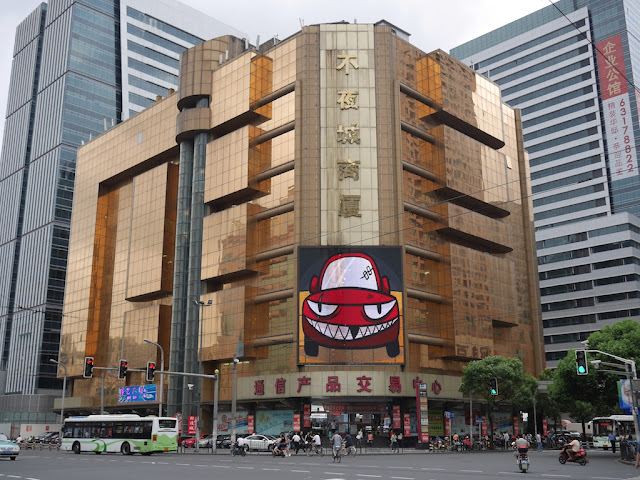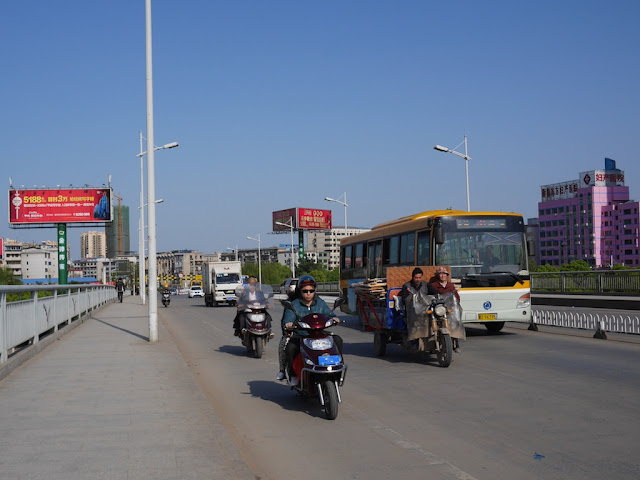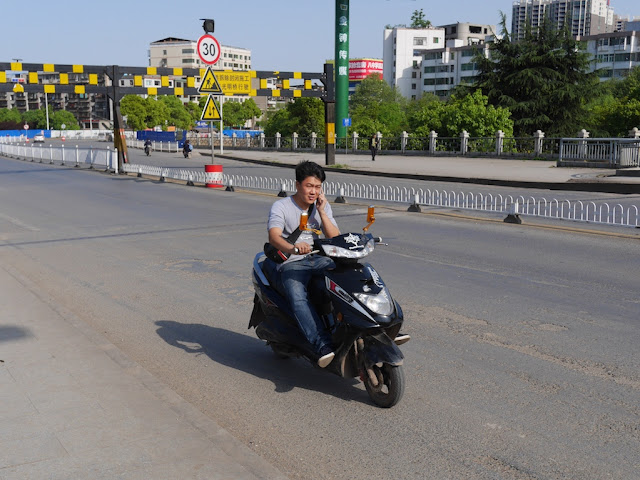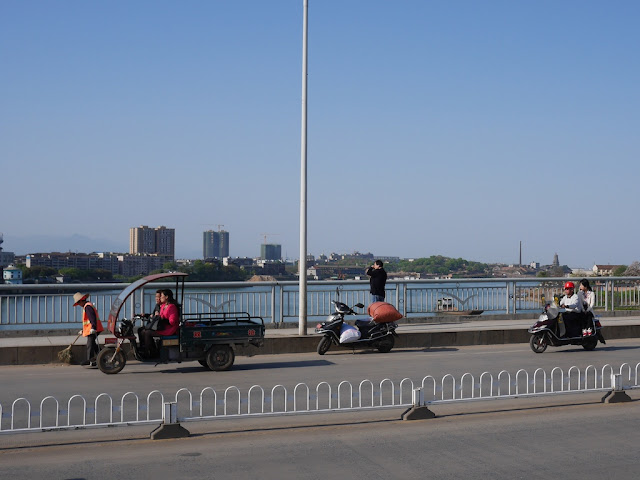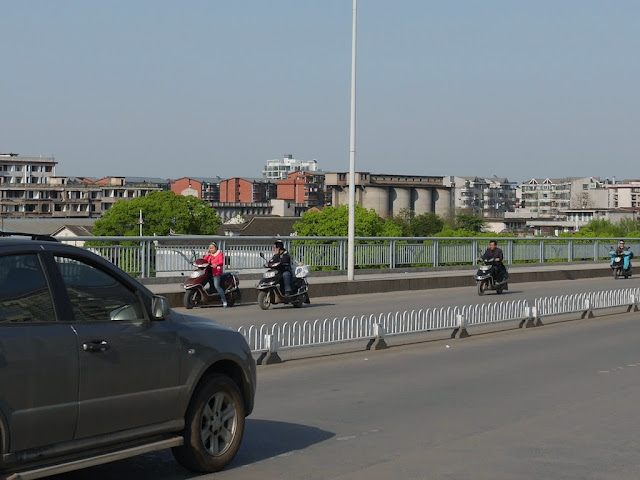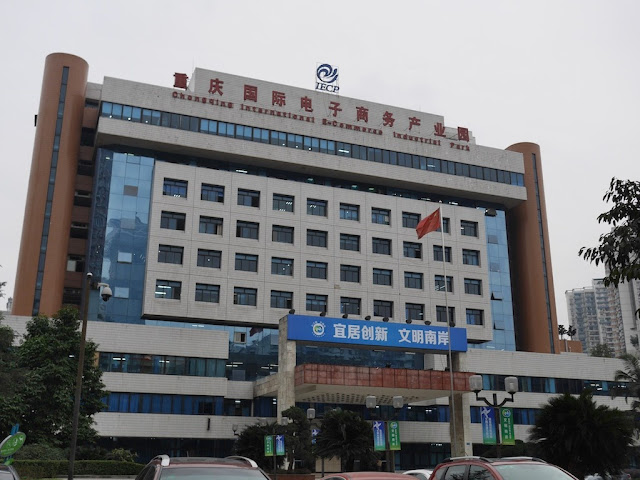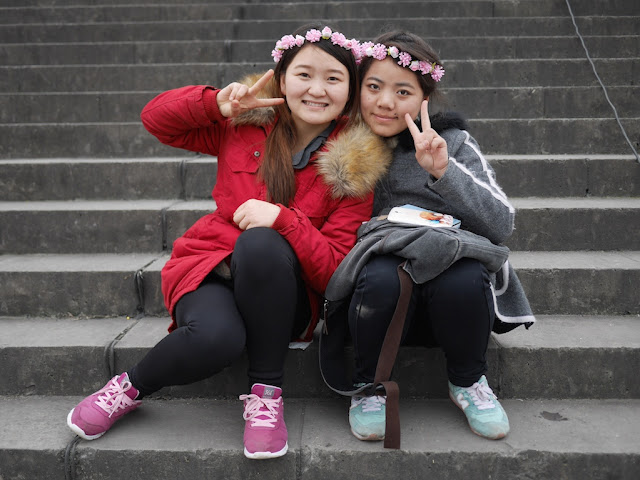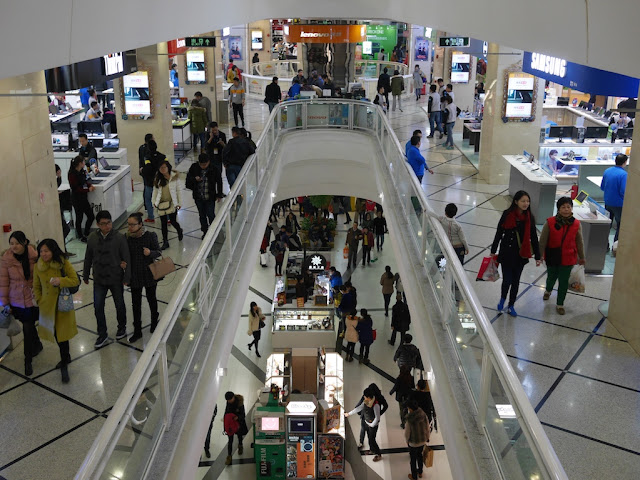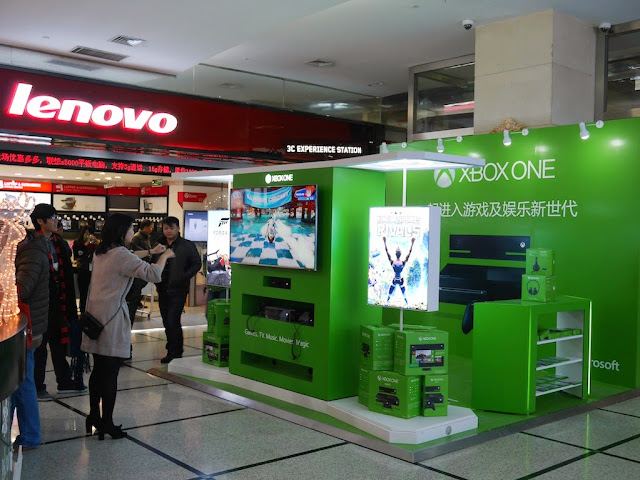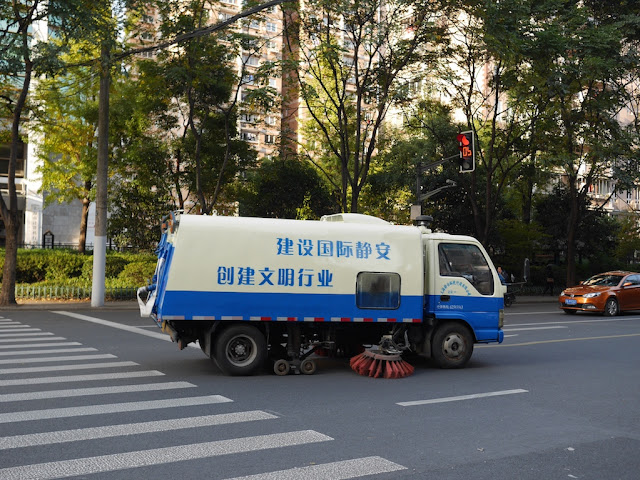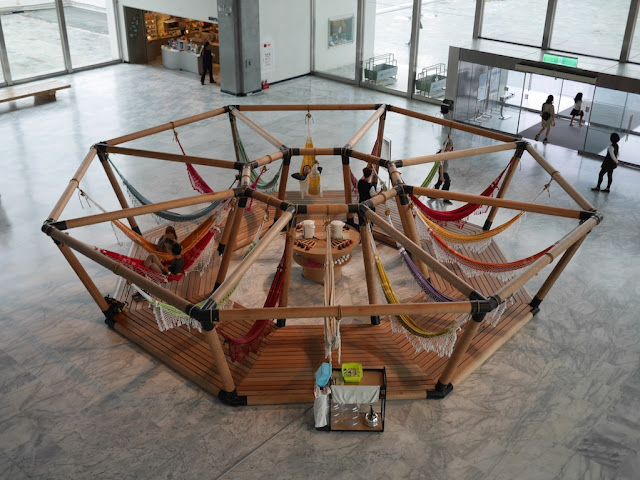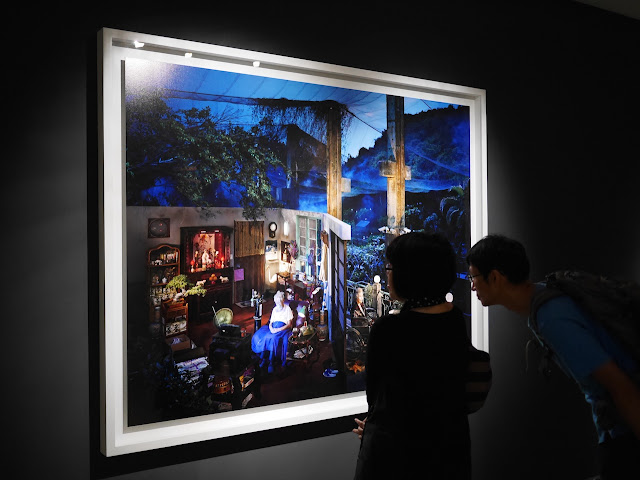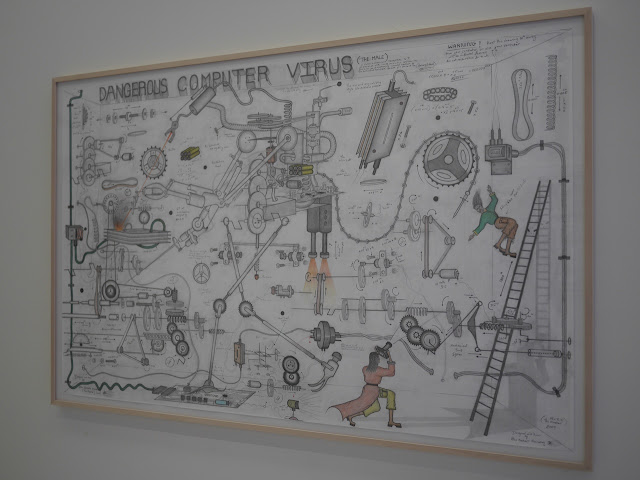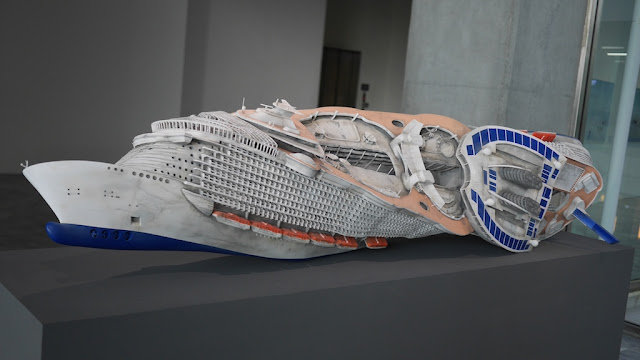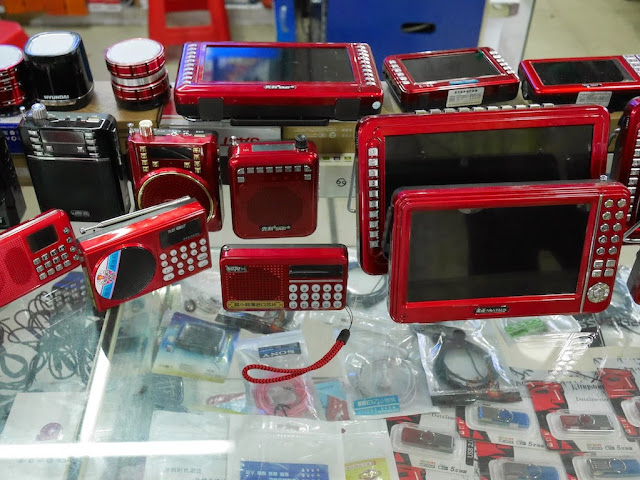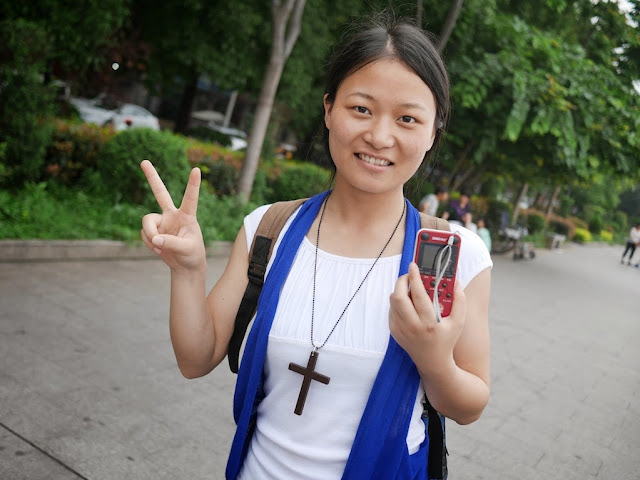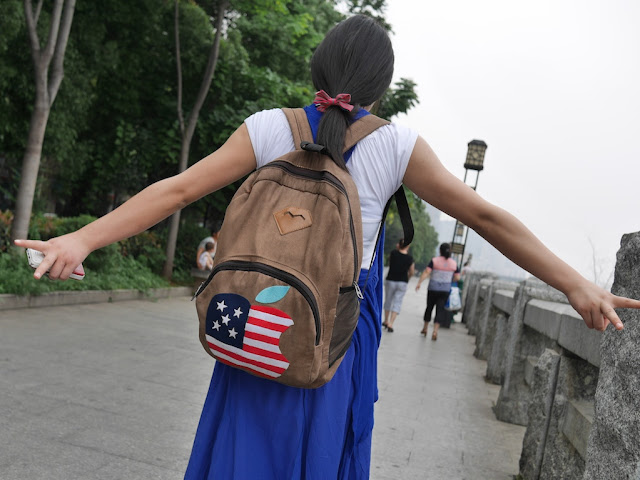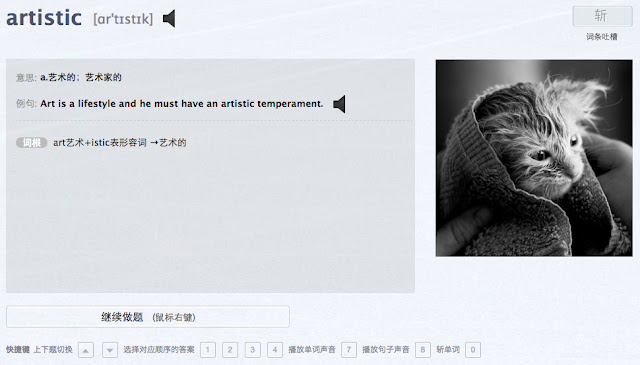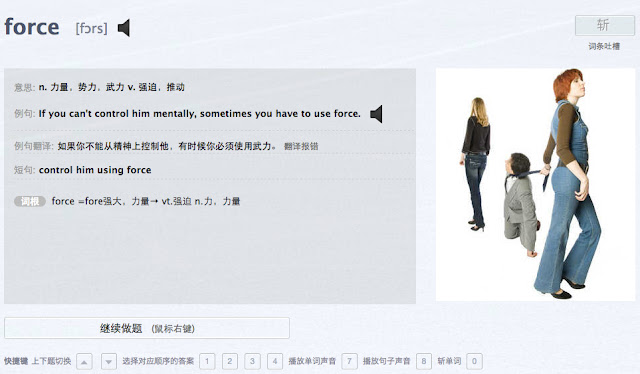About 300 meters (1000 ft) to the east of a pedestrian bridge near the Shanghai Railway Station is a market which fills the majority of a large building. The market's name is written, translated and transliterated in numerous ways. A map inside the market, the sign of a complaints office for the market, and a sign by the market's management, all indicate a name which includes the Chinese "龙晓通信市场" which I'll translate as "Long Xiao Communications Market"*. But names more closely resembling "Bu Ye Cheng Communications Market" — "Bu Ye Cheng", sometimes spelled as a single word, comes from the name of the entire building — appear to be more commonly used. Whatever you call the market, fortunately the gold-tinged building with a large digital billboard at the intersection of Tianmu West Road and Meiyuan Road is easy to spot.
If you so desire, you can collect business cards from the hundreds of stalls and marvel at the different names they give the market. But of more interest to me are the various mobile phones and related products that mostly fill its six dense levels.
I think it offers the closest experience in Shanghai to some of the markets in Shenzhen's immense Huaqiangbei electronics commercial area. I recommend taking a look, especially if you are interested in mobile phones and won't be in Shenzhen. I will refrain from sharing more details about what I saw there, since a closer look is in store for some similar markets in Shanghai and elsewhere in China.
*Two of the signs used the slightly longer name "上海龙晓通信产品市场".
If you so desire, you can collect business cards from the hundreds of stalls and marvel at the different names they give the market. But of more interest to me are the various mobile phones and related products that mostly fill its six dense levels.
I think it offers the closest experience in Shanghai to some of the markets in Shenzhen's immense Huaqiangbei electronics commercial area. I recommend taking a look, especially if you are interested in mobile phones and won't be in Shenzhen. I will refrain from sharing more details about what I saw there, since a closer look is in store for some similar markets in Shanghai and elsewhere in China.
*Two of the signs used the slightly longer name "上海龙晓通信产品市场".

